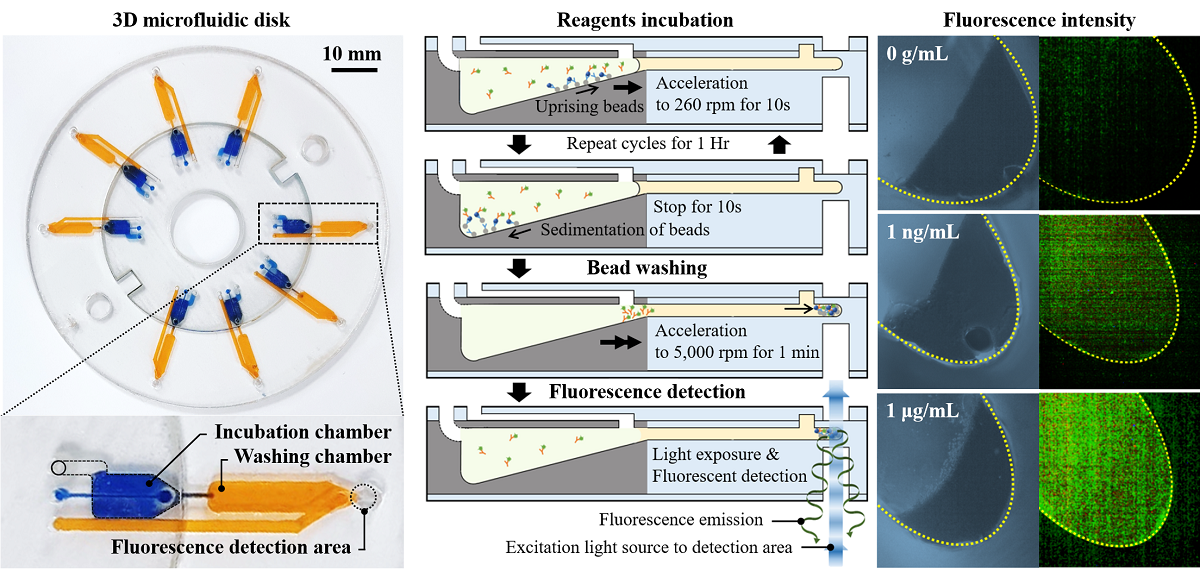Fluorescence-linked immunosorbent assay (FLISA) is a commonly used, quantitative technique for detecting biochemical based on antigen–antibody binding reactions using a well-plate platform. With the developments in the manufacturing technology of microfluidic systems, FLISA can be implemented onto microfluidic disk platforms, which allows the detection of trace biochemical with high resolutions. Apart from requiring a lower proportion of reagent (1/10), this method also reduces the time required for the entire process to less than an hour. The incubation process involves antigen–antibody binding reactions as well as the binding of fluorogenic substrates to target proteins. The protocol for FLISA on a microfluidic platform necessitates the appropriate execution of liquid reagent movements during each step in order to ensure sufficient binding reactions. Herein, we propose a novel microfluidic disk comprising a 3D incubation chamber. Vascular endothelial growth factor as concentration with ng mL-1 is detected sequentially using a benchtop process employing this 3D microfluidic disk. The 3D microfluidic disk is implemented without requiring manual intervention or additional procedures for liquid control. During the incubation process, microbead movement is controlled through centrifugal force, generated due to disk rotation, and gravitational force via bead sedimentation on the sloped floor of the chamber.

